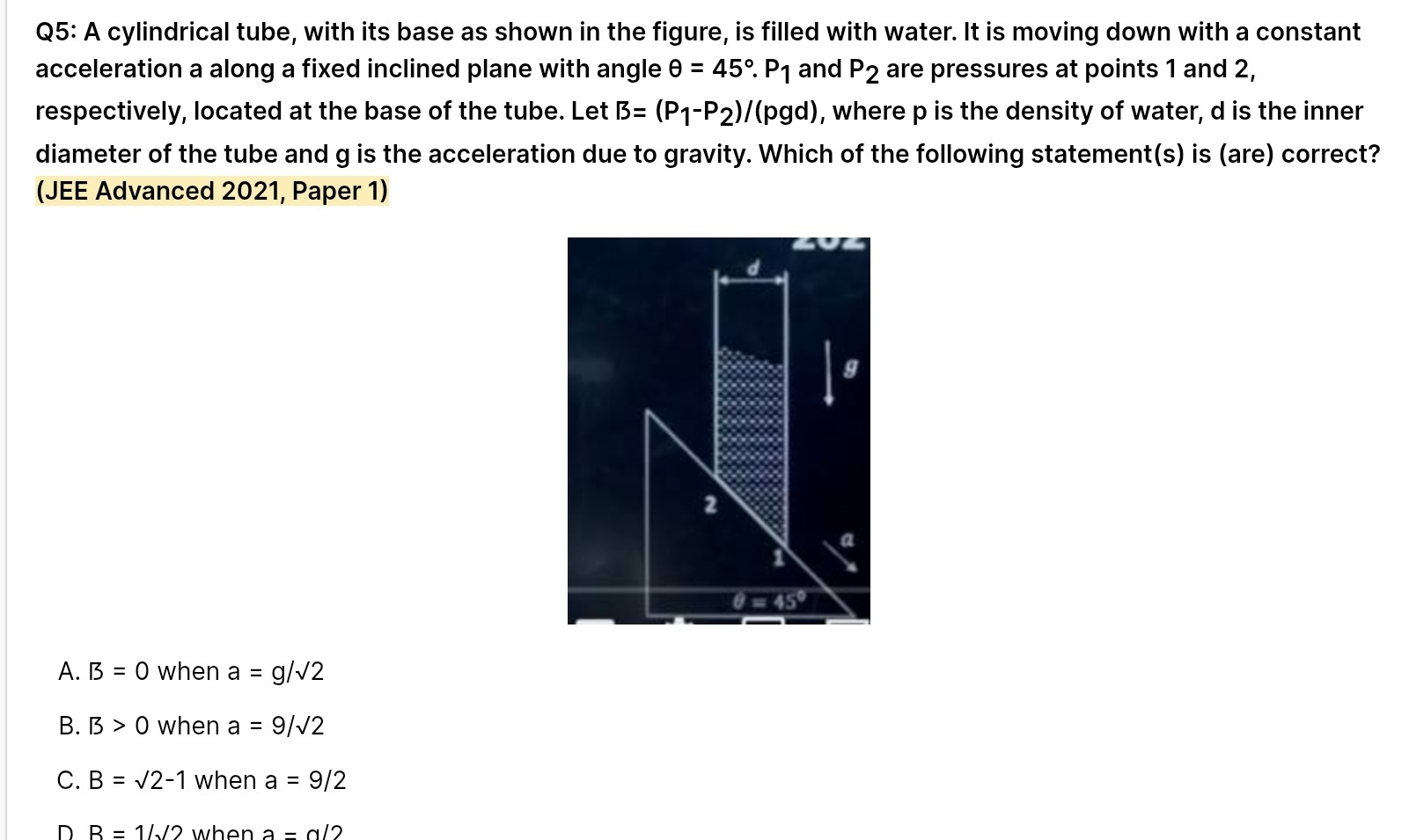Question
Question: A cylindrical tube, with its base as shown in the figure, is filled with water. It is moving down wi...
A cylindrical tube, with its base as shown in the figure, is filled with water. It is moving down with a constant acceleration a along a fixed inclined plane with angle θ = 45°. P1 and P2 are pressures at points 1 and 2, respectively, located at the base of the tube. Let B= (P1-P2)/(pgd), where p is the density of water, d is the inner diameter of the tube and g is the acceleration due to gravity. Which of the following statement(s) is (are) correct?

B = 0 when a = g/√2
B > 0 when a = 9//2
B = √2-1 when a = 9/2
B = 1/√2 when a = g/2
A and B
Solution
The pressure gradient in the fluid is given by ∇P=ρ(g−afluid). Assuming the fluid is in equilibrium in the accelerating frame, afluid=atube=ai^. The gravitational acceleration is g=gsinθi^−gcosθj^. The acceleration of the tube is a=ai^.
The pressure gradient components are: ∂x∂P=ρ(gsinθ−a) ∂y∂P=−ρgcosθ
Points 1 and 2 are at the base of the tube, and the line connecting them is along the inclined plane, with point 1 further down the incline than point 2. The distance between them along the incline is d. Thus, the pressure difference P1−P2 is given by: P1−P2=∫x2x1∂x∂Pdx=∫x2x1ρ(gsinθ−a)dx Since the distance along the incline is d, and point 1 is at x1=x2+d: P1−P2=ρ(gsinθ−a)d
We are given θ=45∘, so sinθ=21. P1−P2=ρ(2g−a)d
The quantity B is defined as B=ρgdP1−P2. Substituting the expression for P1−P2: B=ρgdρ(2g−a)d=g2g−a=21−ga
Now we evaluate the given options:
A. B=0 when a=g/2. If a=g/2, then B=21−gg/2=21−21=0. This statement is correct.
B. B>0 when a=9/2. Assuming g>9 (which is true, as g≈9.8m/s2), then a=9/2<g/2. In this case, ga<21, so B=21−ga>0. This statement is correct.
C. B=2−1 when a=9/2. If a=9/2, then B=21−g9/2=21−2g9. For B=2−1, we would need 21−2g9=2−1. 2g9=21−(2−1)=1−21=1−22. g=2(1−2/2)9=2−29=(2−2)(2+2)9(2+2)=4−29(2+2)=29(2+2)≈15.36. This value of g is not standard. Thus, this statement is incorrect for the usual value of g.
D. B=1/2 when a=g/2. If a=g/2, then B=21−gg/2=21−21. This is not equal to 1/2. This statement is incorrect.
Therefore, statements A and B are correct.
